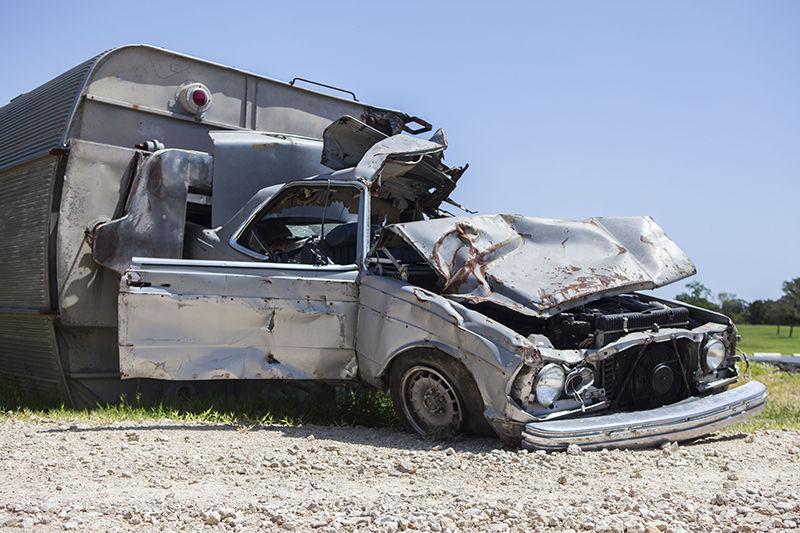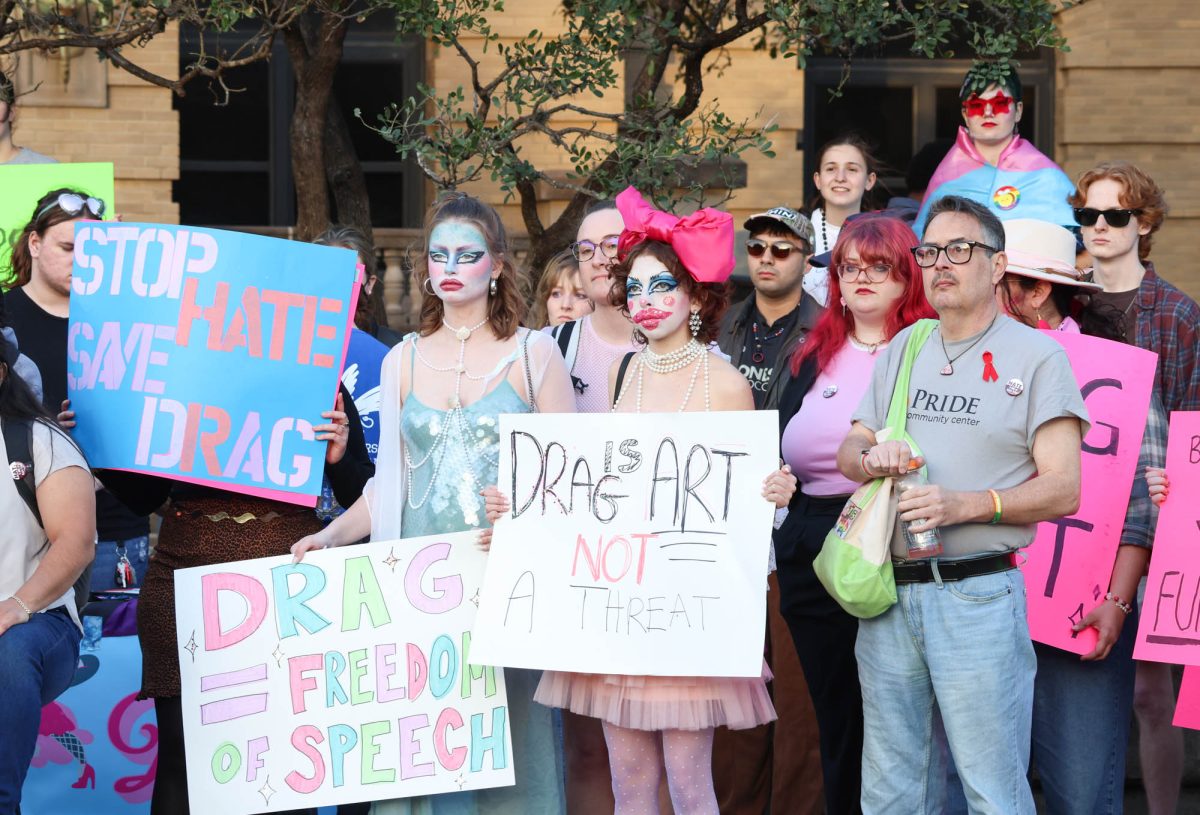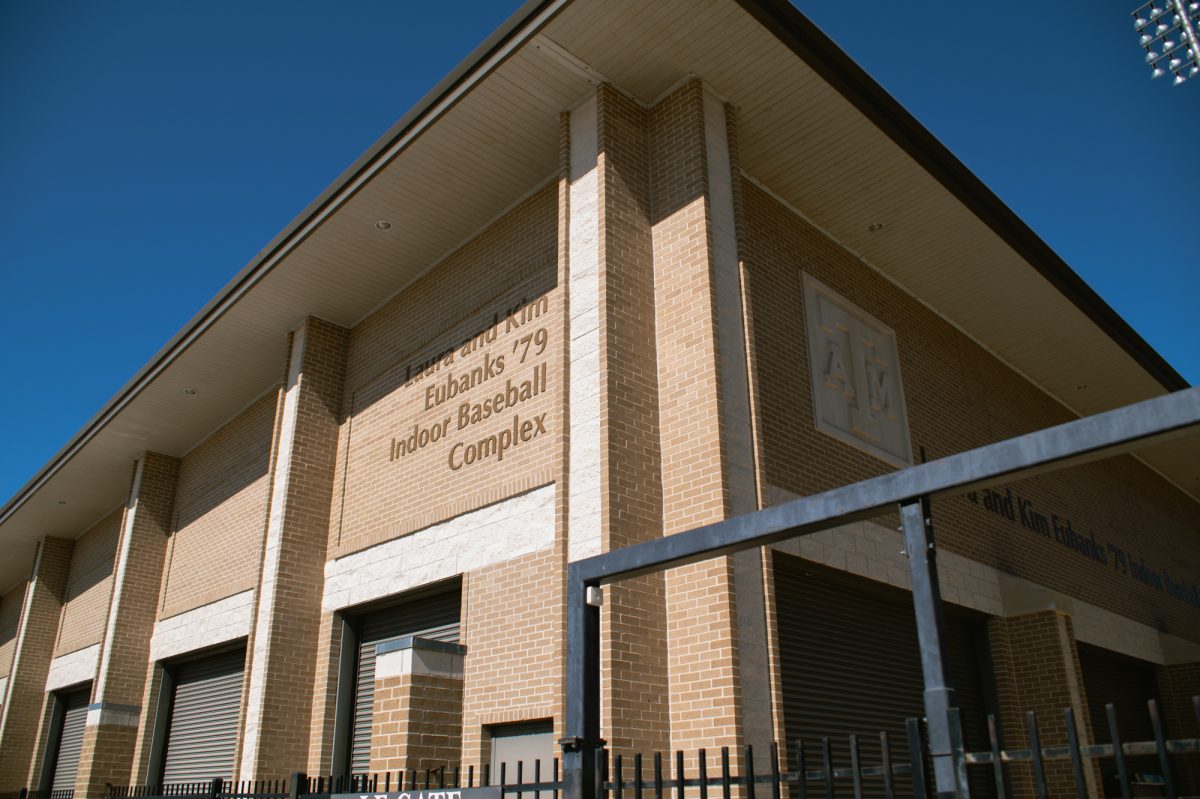For the newest group of Mays Executive MBA students, it was lights, camera, action Wednesday morning.
The Mays Business School, in partnership with the Texas A&M Engineering Extension Service, put the students through their paces in Disaster City at the Brayton Fire Training Field, with everything from actual rescue training to a mock Press Conference with A&M journalism students posing as reporters.
Sarah Smith, a Halliburton VP of Health Safety Environment and Service Quality and one of the Executive MBA students that participated in the training, said the experience helped emphasize the importance of communication and teamwork in positive outcomes.
“[The training] teaches us the importance of communicating up front and having a good plan as well as understanding the different team members that you have at your disposal and put- ting them in a position to make sure you’re maximizing your results,” Smith said.
Professor John Krajicek, who teaches the business communications course in the Mays MBA program, said this event is the first hands-on training experience for this new group of EMBA students, many of whom haven’t been in school in years, and the fast pace helps set the tone for the next two years.
“This is their first experience [as MBA students],” Krajicek said. “A lot of these guys are older guys who haven’t been in school in 20 years, and they’re apprehensive. So right off the bat we’re hitting them with an intense experience that’s sort of setting the tone for their program.”
Professor Michael Wesson, who teaches leadership, human resource management and organizational behavior in the MBA program, said the Disaster City training started about 10 years ago when they were looking for team building exercises.
“Originally when this all came about … we were just looking for a team- building activity,” Wesson said. “So it just kind of went from there. What we’re doing now looks very different from that very first time that we came out here, and it’s gotten bigger and bigger and now there are more and more programs, and we’ve come to realize how valuable this exercise can be.”
Although this training focuses on crisis communication and management, Krajicek said the skills learned are broadly applicable for the executives in the MBA program.
“This to me is about a whole lot more than just literally practicing responding to a disaster,” Krajicek said. “That’s great, but most of them are in roles where they wouldn’t typically do that.”
The Mays Business School, in partnership with the Texas A&M Engineering Extension Service, put the students through their paces in Disaster City at the Brayton Fire Training Field, with everything from actual rescue training to a mock Press Conference with A&M journalism students posing as reporters.
Sarah Smith, a Halliburton VP of Health Safety Environment and Service Quality and one of the Executive MBA students that participated in the training, said the experience helped emphasize the importance of communication and teamwork in positive outcomes.
“[The training] teaches us the importance of communicating up front and having a good plan as well as understanding the different team members that you have at your disposal and put- ting them in a position to make sure you’re maximizing your results,” Smith said.
Professor John Krajicek, who teaches the business communications course in the Mays MBA program, said this event is the first hands-on training experience for this new group of EMBA students, many of whom haven’t been in school in years, and the fast pace helps set the tone for the next two years.
“This is their first experience [as MBA students],” Krajicek said. “A lot of these guys are older guys who haven’t been in school in 20 years, and they’re apprehensive. So right off the bat we’re hitting them with an intense experience that’s sort of setting the tone for their program.”
Professor Michael Wesson, who teaches leadership, human resource management and organizational behavior in the MBA program, said the Disaster City training started about 10 years ago when they were looking for team building exercises.
“Originally when this all came about … we were just looking for a team- building activity,” Wesson said. “So it just kind of went from there. What we’re doing now looks very different from that very first time that we came out here, and it’s gotten bigger and bigger and now there are more and more programs, and we’ve come to realize how valuable this exercise can be.”
Although this training focuses on crisis communication and management, Krajicek said the skills learned are broadly applicable for the executives in the MBA program.
“This to me is about a whole lot more than just literally practicing responding to a disaster,” Krajicek said. “That’s great, but most of them are in roles where they wouldn’t typically do that.”
Krajicek said the focus on crisis management shouldn’t be lost, and that it is important to think about it in the larger picture.
“I wouldn’t say ‘it’s not about crisis communication or crisis management,’ it certainly is about that as well,” Krajicek said. “It’s just that we extrapolate and make it a bigger picture.”
For the journalism students who posed as reporters in the mock press conference, the experience was similarly enlightening.
Roel Ramon, junior telecommunication and media studies junior, said he would like to see himself either in or interacting with the media in his future career, so the ability to gain relevant experience as a “reporter” was valuable.
“I would like to see myself one day doing like public intelligence officer or maybe a reporter or something like that dealing with the media,” Ramon said. “This is good relative work experience.”
Ramon said watching the EMBA students helped him and the other jour- nalism students to realize that preparation is key when dealing with a chaotic environment like the Disaster City scenario.
“I think, just from watching [the EMBA students] today, is being prepared with whatever you’re going to face,” Ramon said. “You’ve got to have facts and a lot of valid information that you’re going to able to present. You can’t go into something like this and be unprepared.”
Smith said she thought the training helped the new MBA students realize where they might have gaps, and that it went a long way in emphasizing the real world value of educational lessons.
“I’ve had the opportunity to do some press training previously, but to actually walk in and have the lights in your face and just a whole bunch of reporters trying to get your attention was some- thing that was very new and we realized where we had some gaps as a team,” Smith said. “I’d just say I think this is a great program through both Mays, the EMBA program, as well as [TEEX] to help folks understand the lessons in a real world environment.”
“I wouldn’t say ‘it’s not about crisis communication or crisis management,’ it certainly is about that as well,” Krajicek said. “It’s just that we extrapolate and make it a bigger picture.”
For the journalism students who posed as reporters in the mock press conference, the experience was similarly enlightening.
Roel Ramon, junior telecommunication and media studies junior, said he would like to see himself either in or interacting with the media in his future career, so the ability to gain relevant experience as a “reporter” was valuable.
“I would like to see myself one day doing like public intelligence officer or maybe a reporter or something like that dealing with the media,” Ramon said. “This is good relative work experience.”
Ramon said watching the EMBA students helped him and the other jour- nalism students to realize that preparation is key when dealing with a chaotic environment like the Disaster City scenario.
“I think, just from watching [the EMBA students] today, is being prepared with whatever you’re going to face,” Ramon said. “You’ve got to have facts and a lot of valid information that you’re going to able to present. You can’t go into something like this and be unprepared.”
Smith said she thought the training helped the new MBA students realize where they might have gaps, and that it went a long way in emphasizing the real world value of educational lessons.
“I’ve had the opportunity to do some press training previously, but to actually walk in and have the lights in your face and just a whole bunch of reporters trying to get your attention was some- thing that was very new and we realized where we had some gaps as a team,” Smith said. “I’d just say I think this is a great program through both Mays, the EMBA program, as well as [TEEX] to help folks understand the lessons in a real world environment.”










